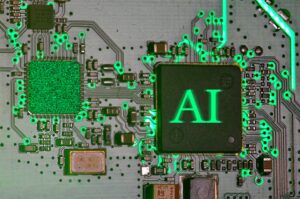The Importance of Robotics in the Response and Recovery for Natural Disasters

The Importance of Robotics in the Response and Recovery for Natural Disasters
Concerning the Role of Technology in the Context of Emergencies
Unpredictable catastrophes, whether they are caused by nature or by humans, often occur without prior notice, leaving behind chaos and damage. As a result of natural disasters such as earthquakes and hurricanes, as well as industrial accidents and building collapses, it is imperative that urgent action be taken. Over the last several years, robots has become an indispensable instrument in the field of disaster response and recovery, serving to bridge the gap between hazardous zones and locations where people are safe.
The Reasons Why Robotics Is Important in Emergency Situations
It is possible for robots to function in conditions that are either too hazardous, unstable, or inaccessible for human responders to work in. This involves entering structures that have fallen, traversing regions where hazardous spills have occurred, and performing search operations in places where radioactive dangers are present.
Various Categories of Robots Employed in Emergency Response
There are a variety of circumstances that call for specialist machines:
- robots designed to search for and rescue people who have survived.
- drones in the air with the purpose of mapping impacted sites.
- In order to remove debris, robotic excavators are used.
- Rescue robots that operate underwater for use in flood and tsunami situations.
Operations Related to Search and Rescue Utilizing Robots
Rapidly locating people who are trapped may be accomplished using robotic devices that are outfitted with cameras, sensors, and microphones. In addition to being able to navigate over debris, these robots are also capable of sending back real-time video feeds and even delivering tiny supplies to survivors.
Using Drones to Conduct Evaluations from Above
The ability of aerial drones to capture high-resolution photographs of disaster zones enables them to deliver immediate situational awareness information. Authorities are able to evaluate the damage, arrange evacuation routes, and prioritize rescue activities with the use of this information.
In the Handling of Dangerous Materials
Leaks of chemicals, nuclear risks, and poisonous smoke are all potential causes of some catastrophes. The removal of hazardous items may be done safely by robots equipped with specialized arms and containment systems, therefore reducing the hazards that human rescuers incur.
Utilization of Robotics in Flooding and Tsunamis Underwater
Flooded places are difficult to travel, but underwater drones and remotely operated vehicles (ROVs) can assess buildings that are immersed in water, identify cars, and search for people who have gone missing.
Administration of Wildfires Using Robotics
It is possible for ground robots and aerial drones to assist in the monitoring of the spread of fires, the execution of controlled burns, and the delivery of supplies to fire fighters located in distant areas.
Provision of Communication Support During Emergencies
When there is a breakdown in the infrastructure, communication suddenly becomes difficult. The ability of some robots to establish temporary networks or relay communication signals allows them to maintain connections amongst rescue teams.
Robotic Health Care Providers in Emergency Situations
It is possible for robots to carry medical supplies, distribute food and drink, and even aid in remote diagnosis in situations when medical staff are unable to reach sufferers in a timely manner.
In the field of disaster robotics, artificial intelligence
Artificial intelligence-driven robots are able to interpret data from a variety of sources, identify survivors using thermal imaging, and make real-time predictions on the most secure rescue routes.
The Importance of Robotics in the Struggle for Recovery
with addition to providing emergency assistance, robots are also used to aid with the reconstruction of infrastructure, the removal of debris, and the restoration of key services after the original crisis was resolved.
Obstacles to Overcome When Attempting to Implement Robotics for Disaster Relief
Despite the fact that robotics has a multitude of benefits, there are still a number of obstacles to overcome, including high prices, problems with maintenance, a short battery life, and the need for qualified operators.
Simulations of Robotics in Action: Case Studies
In the past, catastrophes like as the nuclear accident at Fukushima, the earthquake in Haiti, and numerous storm relief efforts have shown how robots may greatly speed up rescue and recovery operations.
In the future, disaster robots will be used.
The development of artificial intelligence, sensor technology, and autonomous navigation will make future catastrophe robots more capable of handling unanticipated circumstances, as well as speedier, more dependable, and more suited to manage them.
People and machines working together to save lives is a potentially life-saving partnership.
The compassion and agility of human rescuers will never be replaced by robots, but robots are tremendous allies in the fight against human responders. Because of the incorporation of robots into disaster response, lives will continue to be saved and dangers will be reduced in the event of future catastrophes.




